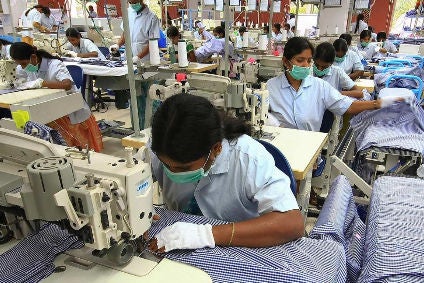
India’s new Bharatiya Janata Party (BJP)-led government is planning to increase the country’s minimum wage rates – a move that could damage the current cost advantages enjoyed of Indian apparel exporters, an industry body has warned.
“Whatever the calculations are, it [a suggested proposed new minimum wage] seems to be 30% to 40% higher from the existing one, especially in remote areas,” Chandrima Chatterjee, director (economic and consultancy) at India’s Apparel Export Promotion Council (APEC), told just-style.
In India, minimum wages are decided by the states, but they have to be above the figure set by the central government – which is currently INR336 (US$4.90) per day, plus an inflation-based variable. In the capital New Delhi the figure is INR538 (US$7.80), for instance, while in Chhattisgarh it is INR333 (US$4.90).
To take advantage of better cost dynamics, several garment manufacturers have moved production units to such central Indian states, where the wages are almost half of those paid in Delhi, Chatterjee says. But with the proposed minimum wage increase, she asks: “Why would anyone now move to remote areas.”
On 11 June the Indian minister for labour, Santosh Gangawar, a key member of the BJP government that was re-elected in India’s April and May general election, told reporters in New Delhi that a new labour bill will soon be introduced in the parliament. This will address all sections in a past bill that was not passed before the election, and which included a minimum wage code.
Clothing industry caution
How well do you really know your competitors?
Access the most comprehensive Company Profiles on the market, powered by GlobalData. Save hours of research. Gain competitive edge.

Thank you!
Your download email will arrive shortly
Not ready to buy yet? Download a free sample
We are confident about the unique quality of our Company Profiles. However, we want you to make the most beneficial decision for your business, so we offer a free sample that you can download by submitting the below form
By GlobalDataAlthough unnamed officials in the ministry of labour told the Economic Times newspaper that the new law will help investors and is expected to accelerate growth, the clothing industry is wary.
“Any labour reform in favour of the employers is never expected from this government as it would be an unpopular move among the public,” Sanjay Kalra, partner at Sanya International, a garment export firm in Gurgaon near capital New Delhi, told just-style.
One of the major demands of the industry is an increase in the overtime hours, Kalra says. “I cannot give 48 hours of overtime in two months, which is actually nothing.”
However, Sanjay Arora, business director at consultancy firm Wasir Advisors, told just-style “the main concern of the garment export industry is to increase exports for which duty benefits are the key.”
And here the industry is hoping the newly re-elected government will strike some beneficial free trade agreements, arguing existing deals with Bangladesh and Japan are not helping the apparel sector. “An FTA with Bangladesh can never help us” and potential alternatives “with UK, US or Canada are not on the anvil,” Chatterjee says.
There are no free trade agreements between the US and India. As a result, apparel exports from India to the US were subject to an average tariff rate of 14.4% for knitted apparel (HS chapter 61) and 10.8% for woven apparel (HS chapter 62), according to the re:source by just-style strategic sourcing tool.
In the financial year ending March 2019, India exported ready-made-garments worth US$16.18bn, down 3% year-on-year, according to the Indian ministry of textiles.
However, according to the latest APEC figures, they have picked up in the new financial year – being worth US$2.94bn in May and early June, up 9.27% year-on-year.
The industry is, however, hopeful about the new government’s move to improve infrastructure and cut bureaucracy. “The next five years have to be about procedural simplification, which leads to reduction of cost and time,” Chatterjee says.
The optimism comes from the day-long meeting held earlier in June between exporters’ organisations and the new minister for commerce, Piyush Goyal.
Several decisions were taken at the meeting, including that the government would aid clothing sector logistics “to help the industry become more efficient,” says Chatterjee. “It demonstrated a clear intent on the part of the government to do as much as possible by the way of ease of doing business.”
Among the challenges currently facing Indian industry is the loss of its designation as a beneficiary developing country under the United States Generalized System of Preferences (GSP) programme. The US is also collecting countervailing duties (CVD) on imports of polyester textured yarn from India after ruling that its producers are receiving unfair subsidies.
And the chairman of one of India’s textile trade bodies has called on the government to implement new policy support measures to help grow the sector as it works to fend off competition from other suppliers including Vietnam and Bangladesh.
But new tax breaks introduced earlier this year for India’s garment exporters should help them to score more international orders, according to the country’s apparel industry associations.



